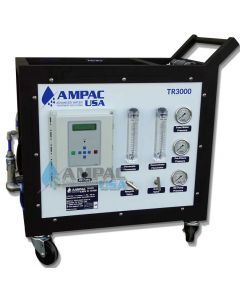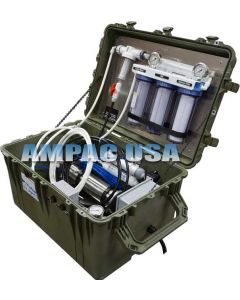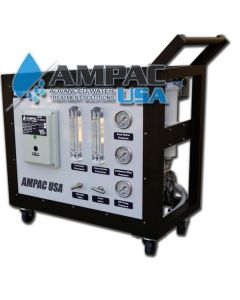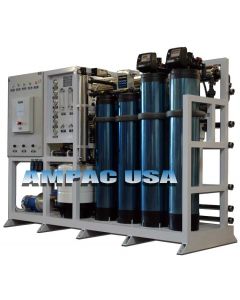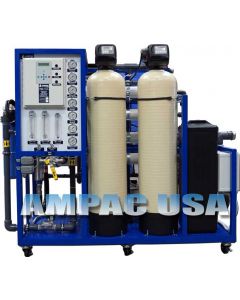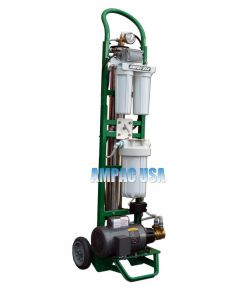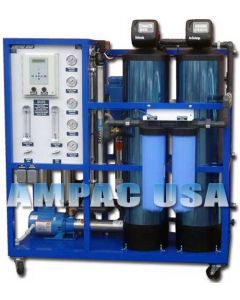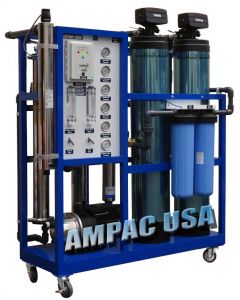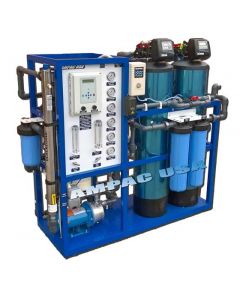Brackish Water Treatment Process
Brackish Water or Well Water is water that is more salty than potable fresh drinking water, in other words is has a higher salinity concentration levels, but not as much as sea water. The word originally deviate from the Dutch root of “Brak” meaning "salty".
Brackish water condition commonly occurs when fresh water meets sea water. In fact, the most extensive brackish water habitats worldwide are where a river meets the sea.
The term “brack” or Brackish was first used to describe bodies of waters that had been mixed with seawater in the 1500s, Brackish Water was not as salty as seawater, yet very distasteful, and was described as harmful water due to its characteristics and to unique microorganisms that caused human illness .
|
Brackish water usually contains from 0.5 to 30 grams of salt per liter (500 to 30,000 ppm or mg/L), however, the brackish water salinity concentrations may vary considerably over space and time. |
The salinity concentration level used by US Geological Survey classifies brackish water in three categories.
- 1- Slightly saline water contains around 1,000 to 3,000 ppm.
- 2- Moderately saline water contains roughly 3,000 to 10,000 ppm.
- 3- Highly saline water has around 10,000 to 35,000 ppm of salt.
Brackish Water can be found in wells, boreholes, mangrove swamps, inland lakes and seas. The Caspian Sea which is very famous for the great sturgeons fish (source of the best caviar in the world) is the largest brackish lake in the world with a salinity level of 1.2%, (12,000 PPM) about one third that of normal seawater. The Baltic Sea is another example of brackish water, the Baltic Sea has the least Saline concentrations in the world with a salt concentration of 0.5% (5000 PPM) compared to the Red Sea and the Persian Gulf both with a salt concentration of about 4.5% (45,000 PPM)
Brackish Water Treatment:
Most Brackish Water can be treated with a Reverse Osmosis Water Purification System, however, desalinating brackish water occurs at lower pressure compared to seawater desalination, resulting in more economical process, less energy consumption and more cost efficient.
 Standard Reverse Osmosis Systems
Standard Reverse Osmosis Systems
Treat water with a salinity concentration of up to 5,000 PPM
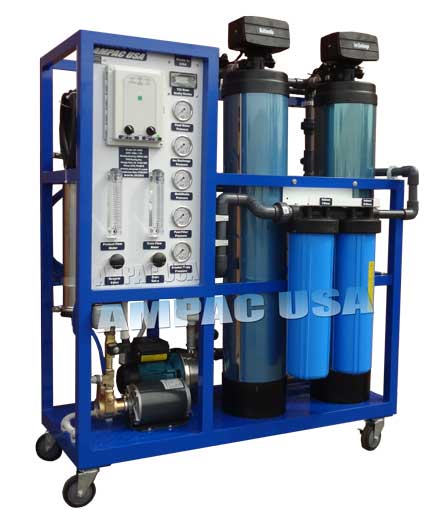 Brackish Water Reverse Osmosis
Brackish Water Reverse Osmosis
Treat water with a salinity concentration of up to 10,000 PPM
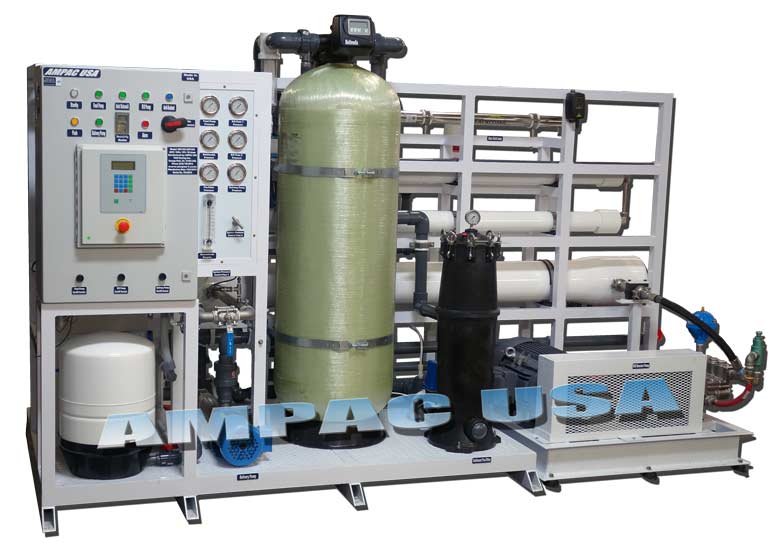 Seawater Reverse Osmosis Systems
Seawater Reverse Osmosis Systems
Treat water with a salinity concentration of up to 50,000 PPM
All Reverse Osmosis Systems require sufficient pre-treatment to ensure proper production, operation and to preserve its operational life. Pre-treatment process is engineered depending on feed water quality, water conditions and flow rates required.
Under sized pre-treatment process may cause a system overload, increasing the plant’s internal parts damage and usage, requiring more service and maintenance which will interrupt normal operations more often, and this will reduce productivity and increase cost.
Under sized pre-treatment will also increase scaling, fouling and plugging of the membrane elements which is the most expensive part of the reverse osmosis process.
The kind of pre-treatment system that is used greatly depends on feed water quality. Consequentially, sufficient feed water pre-treatment is dependent on:
· The source of the feed water
· The composition of the feed water
· The function of the feed water
We always require an exact water analysis report before we commence the manufacturing process of a reverse osmosis project in order to design and build a complete and a correct Reverse Osmosis system with its pre-treatment, fully equipped and fully automated specifically designed and engineered for the specifications, conditions and the requirements of the project.
Emergency Portable Reverse Osmosis 3000 GPD, TR-3000 by AMPAC USA ensures residential/ commercial owners get clean water anywhere. To buy, dial 909-548-4900.
View detailsEmergency Portable Reverse Osmosis 500 GPD by AMPAC USA allows you to get pure water in dire situations. The system is customizable. To buy, call 909-548-4900.
View detailsAMPAC USA™ Emergency Portable Reverse Osmosis 300 GPD, TR-300 allows you to get pure water during emergencies like drought. To order it now, call 909-548-4900.
View detailsIndustrial Reverse Osmosis 8,000 GPD, AP8000-LX by AMPAC USA is ready to be shipped, highly automated and value for money. To order, call 909-548-4900 now.
View detailsCommercial Turnkey Brackish Reverse Osmosis 8,000 GPD, AP8000-LX by AMPAC USA makes brackish water pure and drinkable. Call 909-548-4900 to buy it quickly.
View detailsMobile Emergency Portable Reverse Osmosis Systems 1500 GPD, TR 500 by AMPAC USA is for glass cleaning and car washing facilities. To buy, call 909-548-4900.
View detailsCommercial Turnkey Brackish Reverse Osmosis 6,000 GPD, AP6000-LX by AMPAC USA gets rid of brackish water. For instant delivery of this model, call 909-548-4900.
View detailsCommercial Turnkey Reverse Osmosis 3,000 GPD, AP3000-LX by AMPAC USA is ready to ship, cost-effective and value for money product. To buy, call 909-548-4900.
View detailsCommercial Reverse Osmosis Turnkey Brackish Water 2200 GPD, AP2200-LX is 2200 Gallon per day RO System. To buy this Whole Home RO System, call 909-548-4900.
View details


